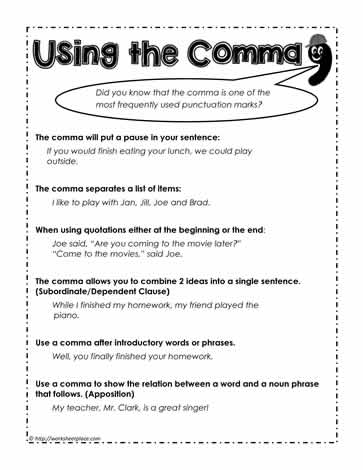Commas are an essential part of writing, as they help to clarify meaning and improve readability. However, many people struggle with knowing when and where to use commas correctly. Here are three basic comma rules to help you improve your writing skills.
When writing a list of three or more items, use commas to separate each item. For example: “I need to buy apples, bananas, and oranges.” This rule is known as the Oxford comma, and it helps to avoid confusion and clarify the meaning of the list.
2. Use a comma before a coordinating conjunction in a compound sentence
When joining two independent clauses with a coordinating conjunction (and, but, or, nor, for, so, yet), use a comma before the conjunction. For example: “I wanted to go to the store, but it started raining.” This comma helps to signal the relationship between the two clauses and improve the flow of the sentence.
3. Use a comma after an introductory phrase or clause
When starting a sentence with an introductory phrase or clause, use a comma to separate it from the main part of the sentence. For example: “In the morning, I like to go for a run.” This comma helps to set off the introductory element and avoid confusion for the reader.
By following these three basic comma rules, you can improve the clarity and readability of your writing. Remember to always proofread your work carefully to ensure that you have used commas correctly and effectively. With practice, using commas will become second nature, and your writing will flow more smoothly.
So, next time you sit down to write, keep these comma rules in mind and watch your writing improve. Happy writing!
